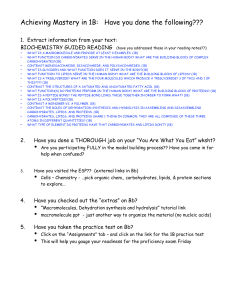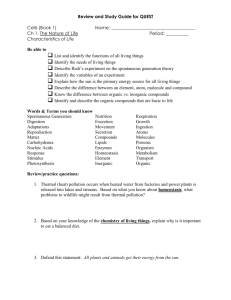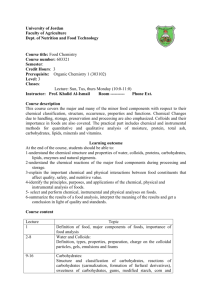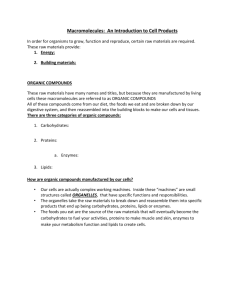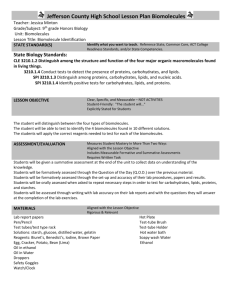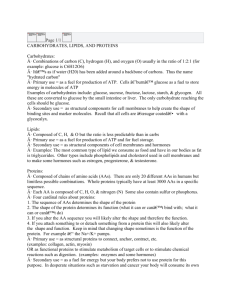Unit_4_Study_Question_
advertisement
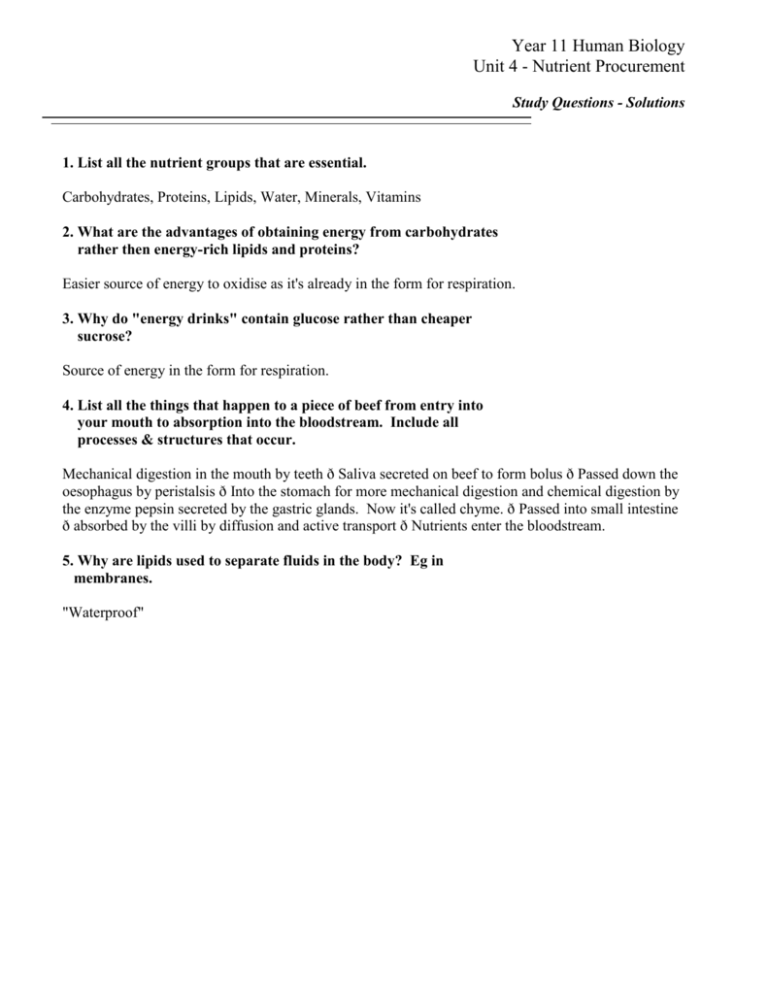
Year 11 Human Biology Unit 4 - Nutrient Procurement Study Questions - Solutions 1. List all the nutrient groups that are essential. Carbohydrates, Proteins, Lipids, Water, Minerals, Vitamins 2. What are the advantages of obtaining energy from carbohydrates rather then energy-rich lipids and proteins? Easier source of energy to oxidise as it's already in the form for respiration. 3. Why do "energy drinks" contain glucose rather than cheaper sucrose? Source of energy in the form for respiration. 4. List all the things that happen to a piece of beef from entry into your mouth to absorption into the bloodstream. Include all processes & structures that occur. Mechanical digestion in the mouth by teeth ð Saliva secreted on beef to form bolus ð Passed down the oesophagus by peristalsis ð Into the stomach for more mechanical digestion and chemical digestion by the enzyme pepsin secreted by the gastric glands. Now it's called chyme. ð Passed into small intestine ð absorbed by the villi by diffusion and active transport ð Nutrients enter the bloodstream. 5. Why are lipids used to separate fluids in the body? Eg in membranes. "Waterproof" 6. How does the structure of your mouth suit it's function? • • • The presence of teeth. The chewing motion of the jaw. The presence of salivary glands 7. How does the structure of the alimentary canal allow the movement of food from the oesophagus to the rectum? Is this structure uniform throughout? The alimentary canal contains 4 layers: • Mucosa Layer: Mucus membrane • Submucosa: Contains glands & tissues • Double circular layer of muscle: Aids in the churning of food. • Serosa: Outer connective tissue. Structure the same all the way down. 8. If you were a dietitian, what advice would you give to a person who recently had surgery to remove their stomach? Increase protein intake. 9. There are 3 main types of carbohydrates. Name them. Mono, Di, Poly saccharides 10. Give the hydrogen/oxygen ratio for carbohydrates. Twice as many hydrogen as oxygen 11. What are the functions of carbohydrates, lipids and proteins? Nutrie nt Function Carbohy drates E nergy P rotein S truc tural E nergy Lipids Ins ulation P rotec tion E nergy 12. Explain the role of the lymphatic system has in the absorption of lipids. The Lacteal absorbs fat from the small intestine. 13. Organic compounds generally contain what element? Carbon 14. What is the dental formula for humans? 2.1.2.3 2.1.2.3 15. Explain what is meant by: (i) Mechanical Digestion. The chewing, grinding and mashing of the food. (ii) Chemical Digestion. The use of enzymes to break the food down. 16. What is the function of the liver? • • • • • • • • • Blood Glucose Regulation Deamination Fat Conversion Bile Formation Plasma Protein Production Production of blood clotting factors Storage Toxin and hormone breakdown. Heat Production. 17. Name the major food tests for carbohydrates, lipids and proteins. • • • Carbohydrates : Glucose - Benedicts Lipids : Brown Paper Proteins : Sakaguchi Starch - Iodine 18. What is the function of the gall bladder? Stores and concentrates bile that is produced in the liver. 19. Why is eating a wide range of food important to the functioning of the human body? To gather all the essential nutrients not in excess.

